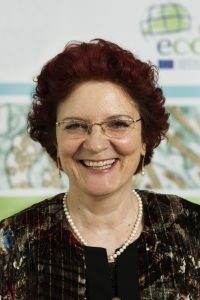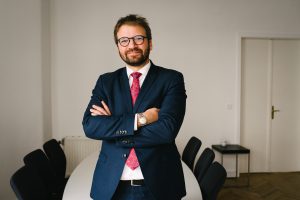Public health experts have been in the spotlight as never before since the beginning of the COVID-19 pandemic. At the same time, the amount of available knowledge as a basis for recommendations given to decision-makers has seldom been so sparse.
Text: Dietmar Schobel
- How is the SARS-CoV-2 virus transmitted?
- What determines the severity of the disease?
- Will there be more COVID-19 “waves”, and when can we expect a vaccine to become available?
Since the outbreak of the COVID-19 (Coronavirus Disease 2019) pandemic at the beginning of this year, we have all had questions like these – and many, many more… Every single one of them is urgent for the person enquiring – regardless of whether it is government ministers, civil servants, employees in companies or non-profit organisations, or citizens. Scientists are expected to be able to deliver clear answers and convey a sense of security.
Public health experts – from virologists, infectious disease specialists and epidemiologists to health services researchers and statisticians – have been at the centre of public interest to an unprecedented extent as a result of the COVID-19 pandemic. Their recommendations have been in particular demand as the amount of available knowledge on all questions relating to the new coronavirus SARS-CoV-2 (severe acute respiratory syndrome coronavirus 2) and the resulting disease COVID-19 was – and in many cases still remains – very small. How have the public health experts – and specifically those who advise governments and other decision-makers – dealt with this dilemma?
Distinction between secure knowledge and estimates

“Right from the start, we clearly communicated the areas where we have secure knowledge and those where we can only make estimates. That was a successful approach,” says Andrea Ammon, Director of the European Centre for Disease Prevention and Control (ECDC) and speaker at the European Health Forum Gastein (EHFG) 2020. At the beginning of the pandemic, the ECDC risk assessments on COVID-19 were updated weekly. Several scenarios were described for each key issue where estimates were difficult – for example, at what speed the disease would spread and the extent to which the health systems would be put under pressure as a result. Altogether almost 300 employees are working at ECDC. Around 60 staff members have been directly involved in this public health emergency, responding to enquiries from EU institutions, national ministries, media and the general public. In addition to government organisations in the 27 Member States of the European Union (EU), the United Kingdom and the States in the European Economic Area Norway, Iceland and Luxembourg, the ECDC also provided guidance for the European Commission, the European Parliament and the European Council.
Right from the start, we clearly communicated the areas where we have secure knowledge and those where we can only make estimates.
ANDREA AMMON, DIRECTOR OF THE EUROPEAN CENTRE FOR DISEASE PREVENTION AND CONTROL
Recommendations as the basis for decisions
Gesundheit Österreich GmbH (GÖG) has around 200 employees in total and provides advice for decision-makers as a national public health institute in Austria. GÖG executive director Herwig Ostermann is speaker at the EHFG 2020 and one of 18 members of the team of advisors in the coronavirus task force, an expert committee supporting the Austrian Ministry of Health fighting the COVID-19 pandemic. “We act as a bridge between science, practice, politics and general public, and provide scientific recommendations,” explains the Austrian expert: “It is then the responsibility of the politicians to make decisions on specific measures based on the information provided by us. That is how it needs to be, because the decision-makers are ultimately responsible for weighing up and evaluating the social and economic implications of their regulations.”

Three thick files with individual enquiries on COVID-19 have been compiled and processed so far at Gesundheit Österreich GmbH. Herwig Ostermann remarks: “There were – and still are – many questions relating to the disease and its causes to which the legitimate response can only be: we are still without any firm evidence, without any comprehensive and unequivocally proven knowledge.” In these cases it is all the more about collecting and analysing the existing approaches and practices and to derive the measures that appear most suitable for protecting the health of the population, in the sense of pragmatic reasoning.
There were – and still are – many questions relating to COVID-19 to which the legitimate response can only be: we are still gathering evidence.
HERWIG OSTERMANN, EXECUTIVE DIRECTOR OF GESUNDHEIT ÖSTERREICH GMBH
The questions have changed
On 9 January 2020 the Chinese Centre for Disease Control and Prevention (China CDC) first reported the new coronavirus SARS-CoV-2. On 11 March 2020 the World Health Organization (WHO) declared COVID-19 a global pandemic. The spectrum of enquiries received by the public health experts has changed since the beginning of the year. The initial focus was predominantly on the virus and its transmission, illness, progression and mortality, and prevention measures – from Personal Protective Equipment to contact tracing. Other questions have gradually joined them – the necessity of travel restrictions, the advantages and disadvantages of different screening methods, the social, health and economic implications of lockdown regulations, and many other issues.
An increasing amount of knowledge on SARS-CoV-2 and COVID-19 has naturally been gathered over the months, although new issues have emerged and many important questions remain unanswered for now. For example, some of these are:
- How long do people remain immune after a COVID-19 infection?
- What long-term effects are to be feared?
- And also: What role is played by children in transmission?
Other questions that we are all concerned with include whether, when and with what intensity will we be facing further waves of infections in the autumn and winter in Europe; when can we expect what kind of vaccine against the disease, and how much protection will be provided by the vaccine.
“An upsurge of infections within certain regions and areas in some countries across Europe was observed at the end of August,” says Andrea Ammon. “However, I assume that with increased testing and good, regional supervision, we will succeed in preventing the disease from spreading extensively over the coming months – with and without a vaccine.” Findings over the past months will likely contribute significantly to ascertaining what measures can best protect the population against COVID-19. Herwig Ostermann emphasises: “Although the COVID-19 pandemic descended upon us like the great flood, I am certain that we will succeed in gaining control of the disease. After all, the amount of knowledge available has increased considerably since the beginning of the year.”
